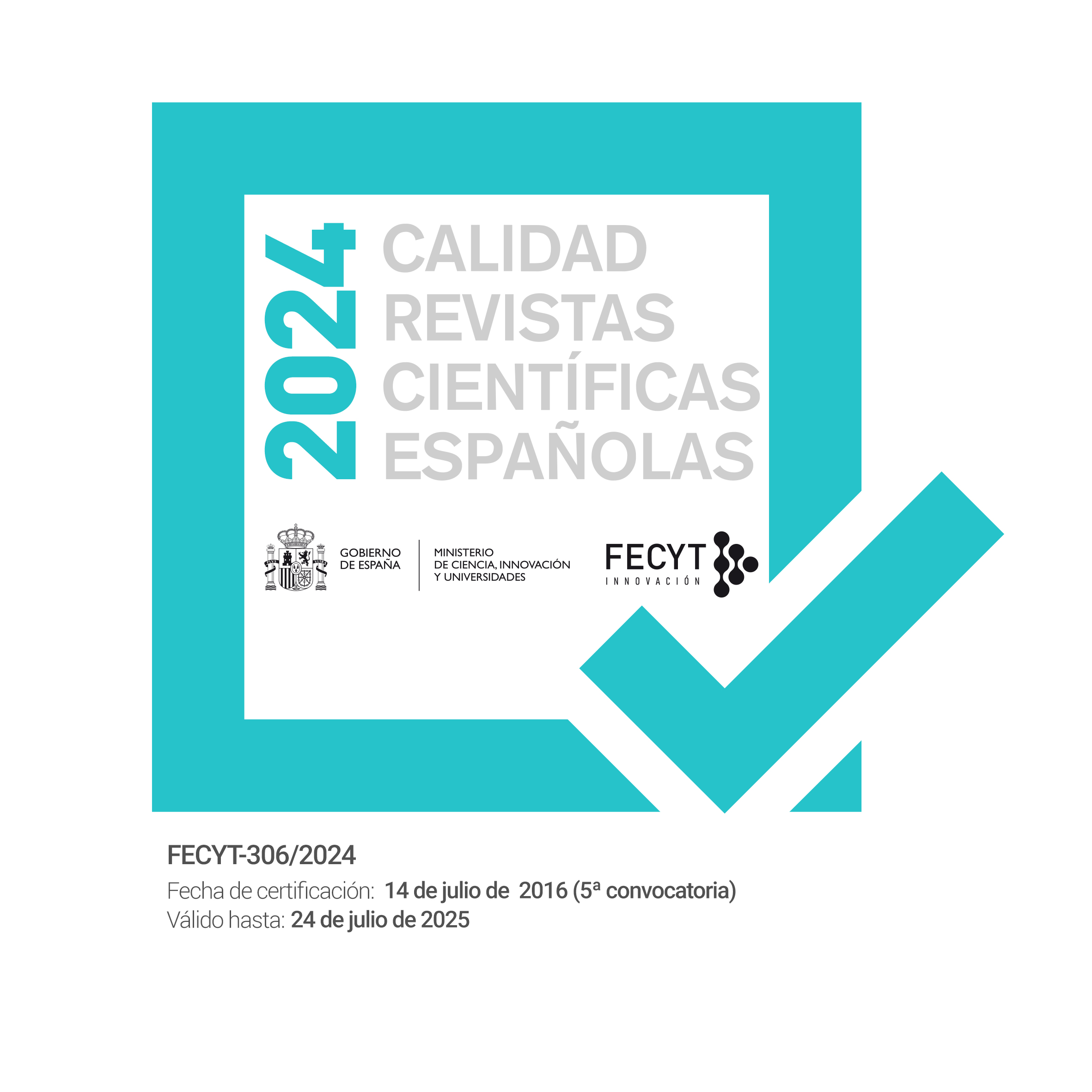Equity and cultural diversity in the school. Regulations and actions of Spanish´s autonomous communities.
DOI:
https://doi.org/10.22325/fes/res.2023.166Keywords:
Immigration, cultural diversity, equity, equal opportunities, inclusive educationAbstract
Since the end of XX century, migratory experience boosted reflections regarding the auspicious regulatory framework in order to attend cultural diversity. This article aim is to revise equity concept within regulations and educational administration activities of Spanish autonomous communities (regions). To do so, we carried out a revision of the regulations, plans and activities the 17 regions and the two autonomic cities of Ceuta and Melilla have been implemented since 2000. Although the theoretical centrality has shifted from compensatory polices to inclusivity, going through integration, our results show that the fundamental concepts are still equity and equal opportunities, especially the second, as equity is being mixed up with educational compensatory policies. Inclusion is being developed as a too general concept and hereby blurred.
References
Alegret, J. L. (1992). Racismo y Educación. En P. Fermoso (Ed.), Educación Intercultural: la Europa sin Fronteras (pp. 93-110). Narcea.
Altarejos, M. (2003). La equidad: fundamento ético para una educación intercultural. ESE, 175(5), 1-8. https://doi.org/10.15581/004.5.25616
Allemann-Ghionda, C. (2008). Intercultural education in schools: A comparative study. Parlamento Europeo.
Ander-Egg, E. (1993). Técnicas de investigación social. El Ateneo.
Banks, J. A. (1986). Multicultural Education: Development, Paradigms and Goals. In Banks, J. A., & Lynch, J. (Eds.), Multicultural Education in Western Societies (pp. 12-28). Holt, Rinehart and Winston.
Banks, J. A. (1996). Multicultural education, transformative knowledge, and action: Historical and contemporary perspectives. Teachers College Press.
Bereiter, C., & Englemann, S. (1966). Teaching disadvantaged children in the preschool. Prentice-Hall.
Bernabé, M. M. (2013). Legislación educativa española e interculturalidad: cambios necesarios. Revista Educativa Hekademos, (13), 65-75. http://www.hekademos.com/hekademos/media/articulos/13/07.pdf
Bleszynska, K. M. (2008). Constructing intercultural education. Intercultural education,
(6), 537-545. https://doi.org/10.1080/14675980802568335
Bourdieu, P. (2001). El capital social. Apuntes provisionales. Zona Abierta, 94-95, 83-88.
Bibi, J. (2015). Exploring the potentials of Intercultural Education in sustaining Social Cohesion in Small Island Developing States. International Journal of Learning, Teaching and Educational Research, 13(4), 81-101.
Bouchard, G. (2011). What is Interculturalism?. McGill Law Journal, 56(2), 435-468.
Carrasco, C. (2015). Discurso de futuros docentes acerca de la diversidad intercultural. Revista Papers, 100(2), 155-172. https://doi.org/10.5565/rev/papers.2086
Caïs, J. Folguera, L. y Formoso, C. (2014). Investigación cualitativa longitudinal. CIS.
Delgado-Algarra, E. J., Bernal-Bravo, C., & López-Meneses, E. (2019). Multicultural Competence and Cosmopolitan Citizenship in the Hispanic-Japanese Context of Higher Education. Journal New Approaches in Educational Research, 8(2), 166-183. https://doi.org/107821/naer.2019.7.425
Díez, E. (2014). La práctica educativa intercultural en Secundaria. Revista de Educación, (363), 12-34. https://doi.org/10.4438/1988-592X-RE-2011-363-168
Echeita, G. (2019). Educación inclusiva. El sueño de una noche de verano. Octaedro.
Echeita, G. (2020). La Pandemia del Covid-19. ¿Una Oportunidad para Pensar en Cómo Hacer más Inclusivos Nuestros Sistemas Educativos?. Revista Internacional de Educación para la Justicia Social, 9(1), 7-16. https://doi.org/ 10.15366/riejs2020.9
Essomba Gelabert, M. (2014). Políticas de escolarización del alumnado de origen extranjero en el estado español hoy. Análisis y propuestas. Revista Electrónica Interuniversitaria de Formación del Profesorado, 17(2), 27. https://doi.org/10.6018/reifop.17.2.198771
Forrest, J., Lean, G., & Dunn, K. (2016). Challenging racism through schools: teacher attitudes to cultural diversity and multicultural education in Sydney, Australia. Race Ethnicity and Education, 19(3), 618-638. https://doi.org/10.1080/13613324.2015.1095170
Garreta-Bochaca, J., Llevot-Calvet, N. y Macía-Bordalba, M. (2020). Intercultural Education in Catalonia (Spain): Evolution of Discourses and Practices (2000-2016). Estudios sobre Educación, 38, 191-215. https://doi.org/10.15581/004.38.191-215
Hewstone, M. (2015). Consequences of Diversity for Social Cohesion and Prejudice: The Missing Dimension of Intergroup Contact. Journal of Social Issues,71(2), 417-438. https://doi.org/10.1111/josi.12120
Jensen, A. R. (1969). How much can we boost I.Q. and scholastic achievement?. Harvard Educational Review, 39(1). https://files.eric.ed.gov/fulltext/ED023722.pdf
Leeman, Y., & Reid, C. (2006). Multi/intercultural education in Australia and the Netherlands. Compare: A journal of Comparative and International Education, 36(1), 57-72. https://doi.org/10.1080/03057920500382325
Leiva, J. J. (2017). La escuela intercultural hoy: reflexiones y propuestas pedagógicas. Revista Complutense de Educación, 28(1), 2943. https://doi.org/10.5209/rev_RCED.2017.v28.n1.48589
Losada, J. L. (2003). Métodos de investigación en ciencias humanas y sociales. Thomson.
Ministerio de Educación, Cultura y Deporte. (2016). Plan Estratégico de convivencia escolar. Secretaria General Técnica. Ministerio de Educación, Cultura y Deporte . Consultado el 10 de junio de 2022. https://sede.educacion.gob.es/publiventa/descarga.action?f_codigo_agc=18430
Ministerio de Educación y Formación Profesional. (2021). Datos y cifras. Curso escolar 2021-2022. Secretaría General Técnica. Consultado el 6 de junio de 2022. https://sede.educacion.gob.es/publiventa/datos-y-cifras-curso-escolar-2021-2022/organizacion-y-gestion-educativa/25355
Miyares, A. (2006). Multiculturalismo, coeducación y ciudadanía. En R. Cobo (Ed.), Interculturalidad, feminismo y educación (pp. 34-54). Ministerio de Educación y Ciencia.
Muñoz A. (1997). Educación Intercultural: Teoría y Práctica. Escuela Española.
Nieto, S., y Santos, M. A. (1997). Formación Multi/Intercultural del profesorado: perspectivas en los Estados Unidos y en España. Teoría de la Educación, 9, 55-74. https://doi.org/10.14201/3127
Norberg, K. (2000). Intercultural education and teacher education in Sweden. Teaching and Teacher Education, 16(4), 511-519. https://doi.org/10.1016/S0742-051X(00)00008-1
Organisation for Economic Co-operation and Development [OECD]. (2010). Educating Teachers for Diversity: Meeting the Challenge. OECD Publishing.
Osuna, C. (2012). En torno a la educación intercultural. Una revisión crítica. Revista de Educación, (358), 38-58. https://doi.org/10.4438/1988-592X-RE-2012-358-182
Rawls, J. (2002). La justicia como equidad. Una reformulación. Paidós.
Palaiologou, N., & Faas, D. (2012). How ‘intercultural’ is education in Greece? Insights from policymakers and educators. Compare: A journal of Comparative and International Education, 42(4), 563-584. https://doi.org/10.1080/03057925.2012.658276
Palaudàrias, J.M. (1998). Análisis de la política educativa en la escolarización de las minorías culturales en Catalunya. En X. Besalú, G. Campani, y J. M. Palaudàrias (Comps.), La educación intercultural en Europa (pp. 171-180). Pomares-Corredor.
Ruíz Olabuénaga, J. I. (2003). Metodología de la investigación cualitativa. Universidad de Deusto.
Sánchez-Bello, A. (2006). La identidad de género en el marco de la escuela intercultural. En R. Cobo (Ed.), Interculturalidad, feminismo y educación (pp. 55-76). Ministerio de Educación y Ciencia.
Santos Rego, M. A., & Nieto, S. (2000). Multicultural/intercultural teacher education in two contexts: lessons from the United States and Spain. Teaching and Teacher Education, 16(4), 413-427. https://doi.org/10.1016/S0742-051X(00)00003-2
Secretaría de Estado de Migraciones (2021). Estadísticas. Ministerio de Inclusión, Seguridad Social y Migraciones. Consultado el 10 de junio de 2022. https://www.inclusion.gob.es/es/estadisticas/index.htm
Sen, A. (1995). Nuevo examen de la desigualdad. Alianza.
Sicilia, G. y Simancas, R. (2018). Equidad educativa en España: comparación regional a partir de PISA 2015. Fundación Ramón Areces y Fundación Europea Sociedad y Educación.
Simón, C., Barrios, A., Gutiérrez, H., y Muñoz, Y. (2019). Equidad, educación inclusiva y educación para la justicia social. ¿Llevan todos los caminos a la misma meta?. Revista Internacional de Educación para la Justicia Social, 8(2), 17-32. https://doi.org/10.15366/riejs2019.8.2.001
Taylor, S. J., y Bogdan, R. (1994). Introducción a los métodos cualitativos de investigación. Paidós.
Terrén, E. (2003). Educación Democrática y Ciudadanía Multicultural: el Reaprendizaje de la Convivencia. En M.L. Morán y J. Benedicto (Eds.), Aprendiendo a ser Ciudadanos. Experiencias Sociales y Construcción de la Ciudadanía entre los Jóvenes (pp. 259-279). Instituto de la Juventud (INJUVE).
Torre, B., y Martín, E. (2020). La Respuesta Educativa al Alumnado con Trastorno del Espectro del Autismo (TEA) en España: Un avance Desigual. Revista Internacional de Educación para la Justicia Social, 9(1), 249-268. https://doi.org/10.15366/riejs2020.9.1.012
Valles, M.S. (2005). El reto de la calidad en la investigación social cualitativa: de la retórica a los planteamientos de fondo y las propuestas técnicas. Revista Española de Investigaciones Sociológicas-REIS, (110). 91-114.
Walzer, M. (1993). Las esferas de la justicia: Una defensa del pluralismo y la igualdad. Fondo de Cultura Económica.
Published
How to Cite
Issue
Section
License
Copyright (c) 2023 Concepción Carrasco Carpio, Isabel Pascual Gómez

This work is licensed under a Creative Commons Attribution-NonCommercial 4.0 International License.
• The transfer of the copyright of the article to Revista Española de Sociología.
• The assignment to the Revista Española de Sociología of the rights of commercial exploitation of the article to third parties both in the offset and digital formats, as well as to the search engines and platforms that may serve as intermediaries for the sale or knowledge of the article.




